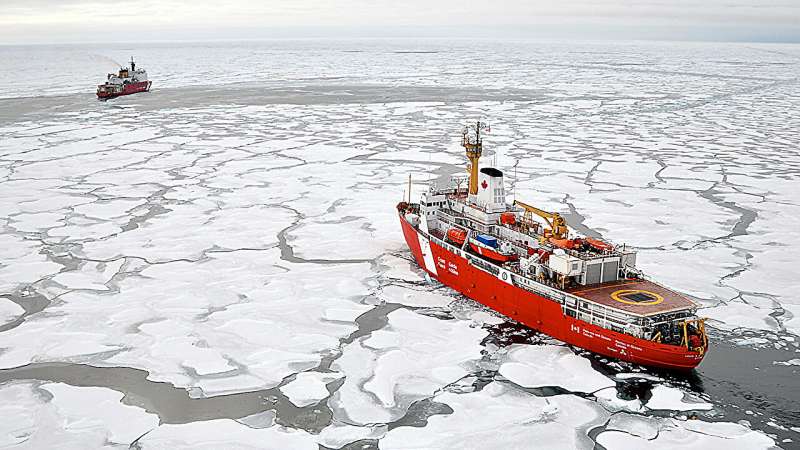This article has been reviewed according to Science X's editorial process and policies. Editors have highlighted the following attributes while ensuring the content's credibility:
fact-checked
peer-reviewed publication
trusted source
proofread
Radioactive isotopes trace hidden Arctic currents

The Arctic Ocean is warming four times faster than the rest of the world's oceans, a trend that could potentially spill over to the rest of the world in the form of altered weather patterns and other climate consequences. Efforts such as the Synoptic Arctic Survey are studying the Arctic Ocean to better understand ocean currents, in the hope of allowing scientists to better predict future changes.
One way to track ocean currents is by tracing, or tracking, radioactive isotopes that humans began generating in the 1950s during nuclear testing. Though these "radionuclides" are now too dispersed to trace, nuclear reprocessing plants are still releasing two radionuclides into the Atlantic: iodine-129 and uranium-236.
In a study, published in Journal of Geophysical Research: Oceans Annabel Payne and colleagues used these radionuclides, present in very small, but still traceable, quantities, to learn about the decades-long path that water from the Atlantic Ocean takes into the Arctic Ocean's Canada Basin.
Their work analyzes radionuclide levels in samples from the deep Canada Basin that were gathered in the 2020 Beaufort Gyre Observing System/Joint Ocean Ice Study expedition.
The researchers found that the water flowing into the Canada Basin takes two separate paths: one across the Chukchi Plateau and Northwind Ridge and one that follows the perimeter of the Chukchi Plateau. Additionally, they found that about 25–40% of winter water from the Pacific Ocean contains markers of Atlantic water by the time it reaches the Canada Basin, which they attribute to upwelling on the Alaskan Beaufort Shelf or in Barrow Canyon, along the boundary of the Chukchi and Beaufort Seas.
Comparing their results to previous studies, they note that transit times for Atlantic waters into the Arctic have not changed over the past 15 years, indicating the currents have been stable over that period.
This research helps validate that iodine-129 and uranium-236 are useful tracers for tracking water masses in the Arctic Ocean and presents a high-resolution glimpse of currents in the region.
The authors say future work expanding the sampling area to the continental slope near Greenland and the Canadian Archipelago will help reveal outflow to the Atlantic Ocean and improve the understanding of this rapidly changing ocean.
More information: Annabel Payne et al, Circulation Timescales and Pathways of Atlantic Water in the Canada Basin: Insights From Transient Tracers 129I and 236U, Journal of Geophysical Research: Oceans (2024). DOI: 10.1029/2023JC020813
Journal information: Journal of Geophysical Research: Oceans
Provided by American Geophysical Union
This story is republished courtesy of Eos, hosted by the American Geophysical Union. Read the original storyhere.




















